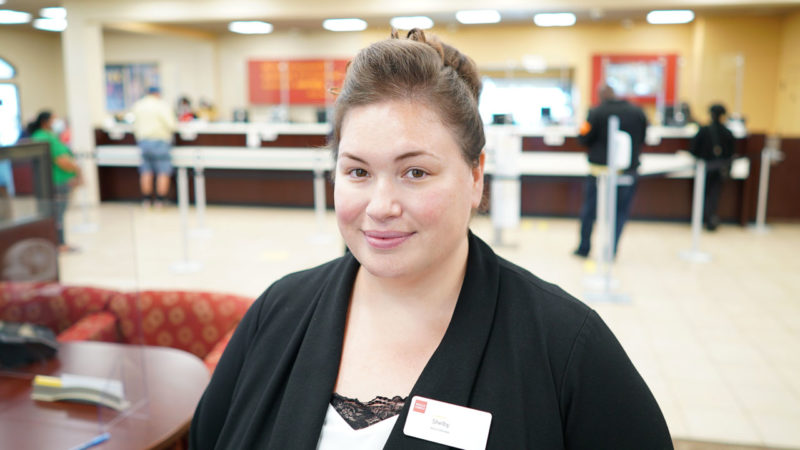How to tell if your sweet talker is a scam artist
Romance scams are on the rise, according to the Federal Trade Commission. Here’s how a Wells Fargo team spotted red flags — and how you can, too.
Shelby Allen and her team immediately recognized something wasn’t right.
One of their regular customers — a single mom in her 50s who frequents their Wells Fargo branch in Huntsville, Alabama — had a romantic online relationship with a man who lived on the other side of the world. She was coming in, again, to wire him money.
“The amount of money coming in and out of her account raised red flags,” said Allen, a branch manager who takes pride in having a personal connection with customers. “She averaged around $700 in her account, and all of a sudden she’s in the branch doing a wire transfer for $70,000 to a boyfriend in Dubai, a place she’s never visited.”
“It’s our job to protect our customers and mitigate risk, so we asked further questions.” — Shelby Allen, Wells Fargo branch manager
The team suspected their customer had begun an online romantic relationship, unknowingly, with a fraudster.
“It’s our job to protect our customers and mitigate risk, so we asked further questions,” Allen said.
Once they got a better sense of things, Allen said, the team’s suspicions were confirmed.
“I immediately recognized the tactics the fraudster was using.”
How scammers use romance
Romance scams are on the rise, the Federal Trade Commission reports. Each of the last three years, people have reported losing more money on romance scams than any other type of fraud identified by the FTC.
In 2020, the FTC reported losses to romance scams reached a record $304 million, up about 50% from 2019. From 2016 to 2020, the FTC said reported dollar losses increased more than fourfold, and the number of reports nearly tripled.
Romance scammers seek out targets by carefully studying them, identifying possible vulnerabilities, and curating personas designed to lure them, according to the FTC’s Emma Fletcher. When they’ve made a connection — most often through social media sites and dating apps — the scammers provide an excuse as to why they can’t meet and why they aren’t, or can’t be, a part of the mainstream banking system.
“What many of the largest reported dollar losses have in common is that people believe their new partner has actually sent them a large sum of money,” Fletcher reports. “Scammers claim to have sent money for a cooked-up reason, and then have a detailed story about why the money needs to be sent back to them or on to someone else. People think they’re helping someone they care about, but they may actually be laundering stolen funds.”
Allen’s customer already had an account with Wells Fargo. But she opened a new one, Allen was told, at the boyfriend’s insistence.
“The sole purpose for the fraudster was to get this customer to open an account so they could move funds through the account,” Allen said.
People between the ages of 40 and 69 reported losing money to romance scams at the highest rates — more than twice the rate of people in their 20s, according to the FTC. People 70 and over reported the highest individual median losses, at $10,000.
“I shared with this customer my previous experience with romantic scams,” Allen said. “It’s hard at first because the customer believes the fraudsters really care about them. There’s an aspect of just being there to listen. But also, customers who are caught in these scams don’t often think about, or are aware of, the potential impacts, such as tax implications if they are audited. They don’t see how wrong it is or even the severity of the situation they’re in.”
With such scams on the rise and seeing people in their own communities being targeted, Allen and the bankers in her branch said they’re ever vigilant to help keep customers safe.
“We talk about fraud a lot during meetings,” Allen said. “I’m fortunate that I have a seasoned team. We know our regular customers, and then we are all very aware of the red flags. Knowing your customers is the key — had we not known the digital capabilities of Wells Fargo and how our customers typically bank, we might not have been able to prevent fraud like this.”









